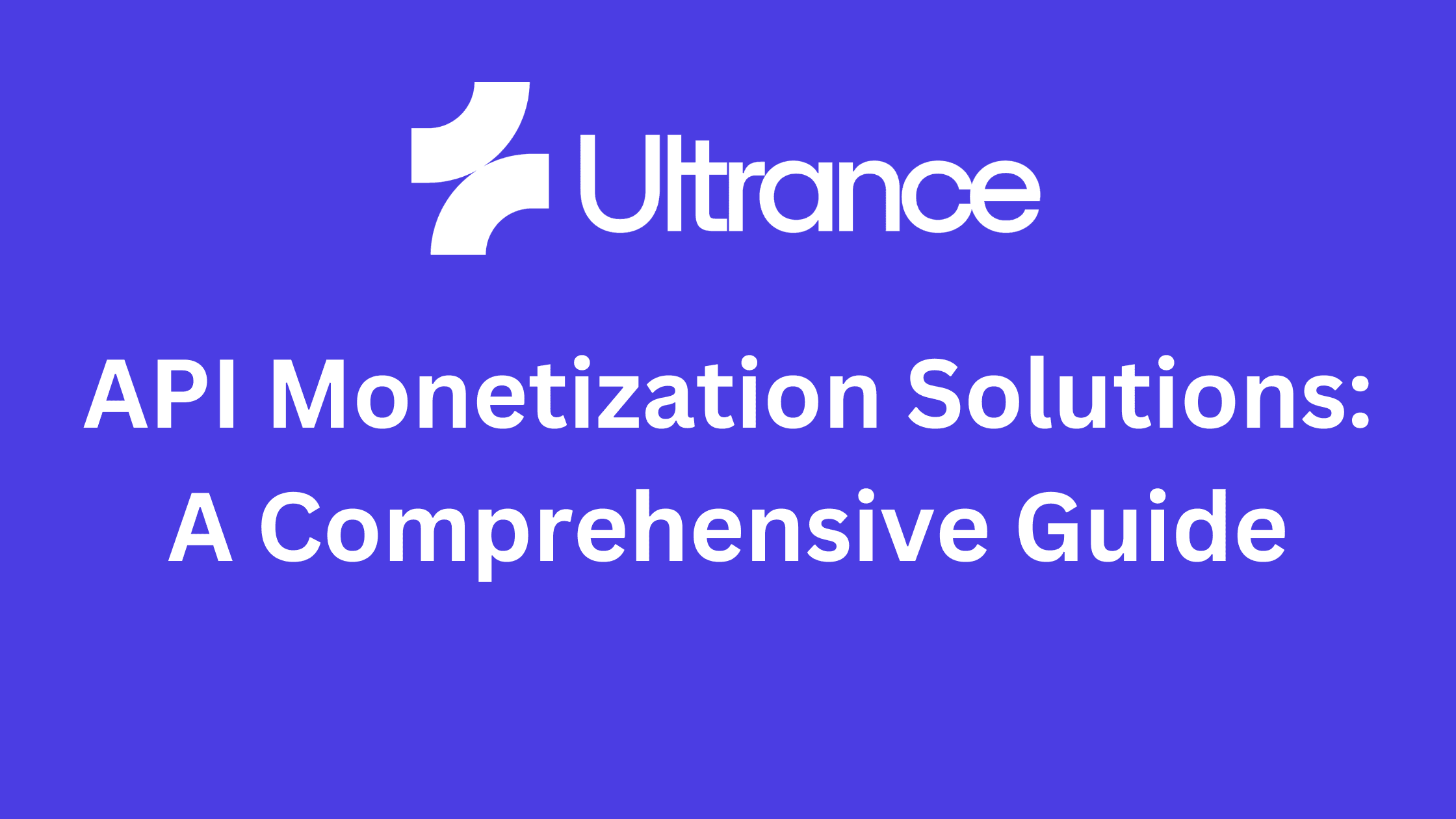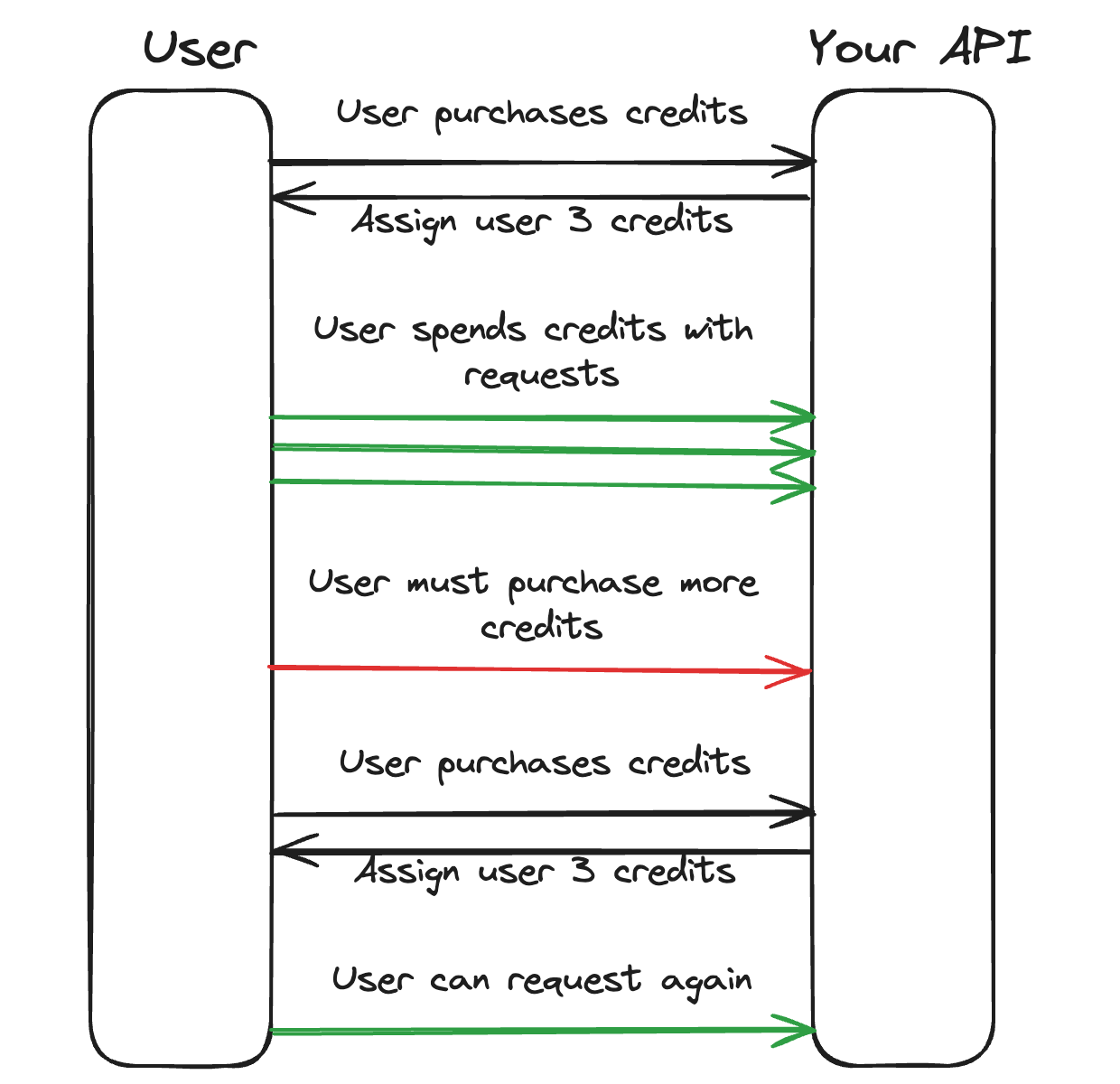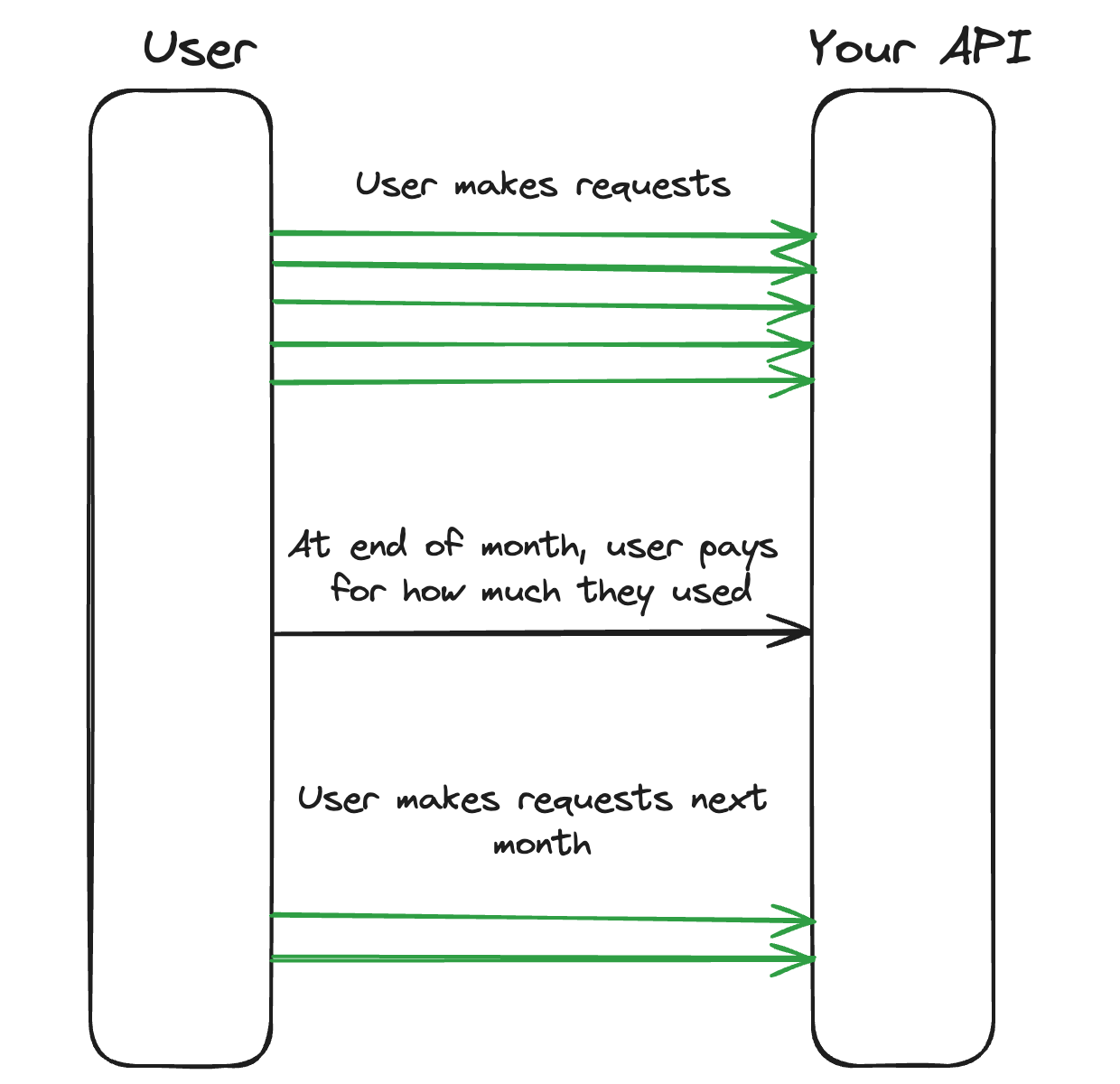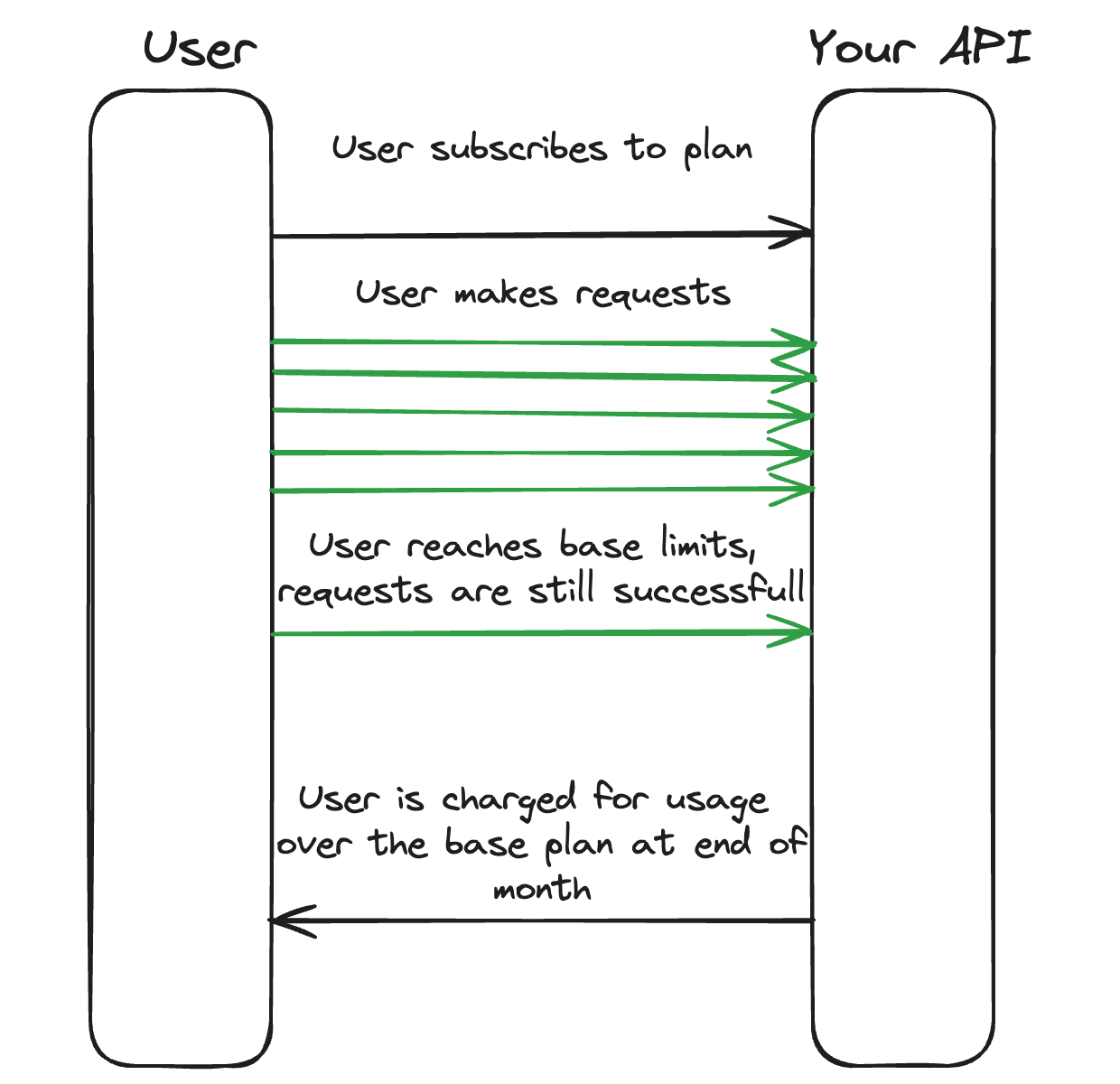
In today's fast-paced digital economy, APIs have become an essential component of modern software development. As more businesses recognize the value of exposing their services through APIs, the question of how to monetize these digital assets has become increasingly important. Choosing the right revenue model is crucial for the success and sustainability of any API-driven business.
This comprehensive guide explores the various monetization models available for APIs, including credit-based, subscription-based, usage-based, and hybrid approaches. By understanding the advantages and disadvantages of each model, businesses can make informed decisions about how to monetize their APIs effectively. Along with each model, we provide api monetization examples to show how they can be implemented in practice.
Credit-Based Billing
Credit-based billing is a popular monetization model for APIs, where users purchase a set number of credits that can be exchanged for API calls or services. This model offers flexibility and control for both API providers and consumers.
Example
A company might offer 1$ per credit and charged 1 credit per API call. A user can purchase 3 credits, and then use them to makea 3 API calls. Once the credits are depleted, the user must purchase more credits to continue using the API.

Advantages of credit-based billing include:
- Predictable revenue for API providers
- Flexibility for users to consume services as needed
- Easy tracking and management of API usage
However, there are also some disadvantages to consider:
- Potential for unutilized credits, leading to user dissatisfaction
- Difficulty in predicting future revenue for API providers
- Need for robust credit tracking and management systems
One notable example of an API using credit-based billing is Twilio, a cloud communications platform. Twilio users purchase credits that can be used for various services, such as SMS, voice calls, and video.
Implementing credit-based billing can be achieved using popular payment platforms like Stripe. Stripe offers a range of tools and APIs that simplify the process of managing credit purchases, tracking usage, and handling billing.
Subscription-Based Billing
Subscription-based billing is another common monetization model for APIs, where users pay a recurring fee for access to the API and its services. This model provides a stable and predictable income stream for API providers.
Example
Company A offers a subscription plan for $10 per month, which includes 3 API calls per month. A user can subscribe to this plan and make up to 3 API calls each month. If the user exceeds the limit, they may have to upgrade to a higher-tier plan or wait until the next billing cycle to use the API again.

Advantages of subscription-based billing include:
- Predictable and recurring revenue for API providers
- Simplified pricing structure for users
- Easier budgeting and cost control for API consumers
However, there are also some potential drawbacks:
- Less flexibility for users with varying usage needs
- Potential for user churn if the perceived value does not match the subscription cost
- Need for effective subscription management and billing systems
Stripe, the payment processing platform, is a prime example of an API that utilizes subscription-based billing. Stripe offers various subscription plans with different features and pricing tiers to cater to the needs of different users.
Implementing subscription-based billing can be streamlined using platforms like Chargebee. Chargebee provides a comprehensive suite of tools for managing subscriptions, handling billing, and automating recurring payments.
Usage-Based Billing
Usage-based billing, also known as pay-as-you-go or metered billing, is a monetization model where users are charged based on their actual consumption of API services. This model aligns the cost with the value received by the user.
Example
Company B offers an API that charges $0.01 per API call. A user can make as many API calls as needed and will be billed based on the total number of calls made. The user receives an invoice at the end of the billing cycle, detailing the charges based on usage.

Advantages of usage-based billing include:
- Fairness and transparency for users, as they only pay for what they use
- Potential for higher revenue for API providers with high-volume users
- Encourages API adoption and experimentation, as users can start with minimal costs
However, usage-based billing also has some challenges:
- Unpredictable revenue for API providers, as usage can fluctuate
- Complexity in tracking and metering usage accurately
- Potential for bill shock for users with unexpected high usage
The Google Maps API is a well-known example of an API that employs usage-based billing. Users are charged based on the number of map loads, geocoding requests, and other API calls they make.
Implementing usage-based billing can be done using platforms like WithOrb.com. WithOrb.com provides a flexible and scalable solution for tracking API usage, calculating charges, and generating invoices based on actual consumption.
Hybrid Approaches
Hybrid API billing models combine elements from credit-based, subscription-based, and usage-based approaches to create a more flexible and adaptable pricing structure. These models allow API providers to cater to diverse user needs and maximize revenue potential.
Example
Company C offers a hybrid pricing model that includes a base subscription plan for $5 per month, which includes 5 API calls. Users can purchase additional credits at $0.02 per call for usage beyond the subscription limit. The user receives a monthly invoice detailing the subscription fee and usage charges.

Benefits of hybrid billing models include:
- Flexibility to accommodate different user segments and usage patterns
- Ability to capture value from both high-volume and low-volume users
- Opportunity to upsell and cross-sell additional services or features
For example, an API provider might offer a base subscription plan that includes a certain number of credits per month, with usage-based charges applied for consumption beyond the allotted credits. This hybrid approach ensures a predictable minimum revenue while also capitalizing on heavy users.
Implementing hybrid billing models can be achieved using platforms like m3ter. m3ter provides a comprehensive solution for designing and managing complex pricing models, including hybrid approaches that combine subscription and usage-based elements.
Implementing API Billing
When it comes to implementing API billing, businesses have several options, ranging from manual integration with payment platforms to all-in-one solutions.
Manual Implementation
API providers can manually integrate their systems with payment platforms like Stripe, WithOrb.com, Chargebee, and Paddle to handle billing and payment processing. This approach offers full control and customization but requires significant development resources and expertise.
For example, integrating with Stripe involves using their API to create and manage customers, subscriptions, and invoices. Developers need to write code to handle events like subscription upgrades, downgrades, and cancellations, as well as reconcile payments with API usage data.
Ultrance as a Solution
Ultrance offers a solution for API billing and monetization, simplifying the process of implementing and managing pricing models. With Ultrance, API providers can quickly set up and configure their desired billing approach without the need for extensive development work.
Ultrance provides features such as:
- Visual pricing model builder
- Automated billing and invoicing
- Real-time usage tracking and analytics
- Integration with popular payment gateways
By using a solution like Ultrance, businesses can save time and resources while still having the flexibility to adapt their pricing models as needed.
Choosing the Right API Monetization Model
Selecting the appropriate monetization model for an API is crucial for its success and long-term sustainability. API providers must consider various factors when making this decision, including:
- Target audience and their usage patterns
- Value proposition and competitive landscape
- Business goals and growth strategy
- Technical capabilities and resources
For example, a startup offering a niche API may opt for a simple subscription model to validate demand and ensure predictable revenue. As the business grows and gains more users, they may introduce usage-based elements to capture value from high-volume customers.
On the other hand, an established enterprise with a diverse user base may choose a hybrid approach from the outset, offering multiple pricing tiers and consumption-based charges to accommodate different needs and budgets.
Ultimately, the right monetization model aligns with the API provider's business objectives, target market, and value delivery. It is essential to continuously monitor and adapt the pricing structure based on user feedback, market trends, and business performance.
Conclusion
Choosing the right monetization model for an API is a critical decision that can significantly impact the success and profitability of an API-driven business. By understanding the advantages and disadvantages of credit-based, subscription-based, usage-based, and hybrid approaches, API providers can make informed decisions that align with their business goals and target audience.
Implementing the chosen billing model can be achieved through various means, from manual integration with payment platforms like Stripe, Orb, Chargebee, and Paddle to using solutions like Ultrance. Each approach has its own set of benefits and challenges, and API providers must carefully consider their technical capabilities and resources when selecting an implementation method.
As the API economy continues to grow and evolve, it is essential for businesses to remain flexible and adaptable in their monetization strategies. Regularly monitoring user feedback, market trends, and business performance can help API providers identify opportunities for optimization and growth. By staying attuned to the needs of their users and the broader industry landscape, API-driven businesses can position themselves for long-term success in an increasingly competitive market.